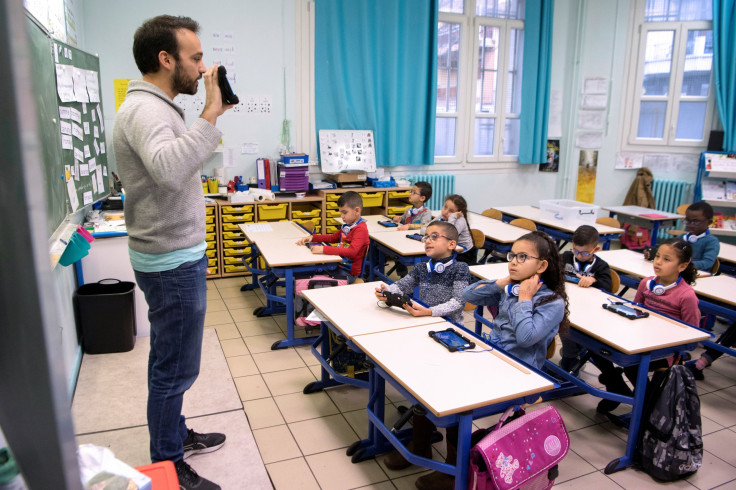Classroom Technology: How Educators Can Better Manage Learning Tools

There is too much technology in our classrooms – and I’m not just talking about pupils’ mobile devices. From interactive whiteboards to tablet computers, creative software to classroom and behavior management apps to computer-configured seating plans, there’s a bewildering array of tech available to teachers today. That’s not to say that these are unwelcome – far from it. Any and all of these tools can have a real impact on teachers’ ability to bring a subject to life, to engage pupils, and improve learning outcomes.
Rather, it is the proliferation of so many different, overlapping platforms that’s at the root of the problem. Any teacher starting at a new school will tell you that much of their first few terms is spent getting up to speed with all the systems, apps and platforms peculiar to that institution. In fact, it’s not unknown for pupils at the same school to use one platform for, say, online homework submission and marking in their physics class, and a different one for English.
This is the result of an un-strategic, fragmented approach to technology procurement at all levels; one where superintendents, individual teachers, budget holders, head teachers and technology department heads, each have their pet platforms and apps. The consequence of this free-for-all is confusion – for teachers, pupils and parents all. The sheer variety of technological tools is having the opposite effect from that intended, which is to make learning and classroom management better and more intuitive.
Bodies such as the Office for Education Technology are helping to make sense of the problem by establishing a policy framework and consistent vision for how technology can be used to transform education across the country. However, as with any measures implemented at a national level, progress has been slow, and therefore true information about best practice for adopting innovation is yet to penetrate at a regional level. This raises the question — how on earth could teachers and administrators, rarely tech experts themselves, make sense of this complex cornucopia, and pursue a strategic procurement policy?
As school districts who embark on a technology procurement journey will quickly find, it’s much easier to add a new platform than it is to whittle down the list of technologies. The result is that technologies are either added one on top of the other in a great tangle of software licenses and data-sharing agreements, or that other platforms – often acquired at great expense – are left to molder at the back of the virtual stationery cupboard.
How can schools unravel the Gordian knot in which they’ve tied themselves? They could, of course, align themselves with one holistic provider – for example, by becoming Apple Distinguished Schools. But this ties an educational establishment into a monolithic product strategy; one that’s often decided in a boardroom many thousands away and ignorant of the specific pressures that an individual school might face. It can also prevent them from selecting complementary or competing technologies from smaller edtech start-ups – including those designed by educators themselves, who truly understand the real pressures under which teachers labor. Why would a visionary head teacher, charged with turning around a failing school or improving a satisfactory one, agree to such a constrictive technology strategy?
There is another aspect to all this, which is the effect it has on those who have an intuitive understanding of technology – the pupils themselves. Children are great at spotting when the grown-ups are getting things wrong; and a disjointed technology strategy is one of the best ways to sap their confidence in their teachers and school administrators.
So, in the absence of government guidance, how can schools establish a technology strategy that makes sense? Here is what we recommend.
- Discuss a use case: First, have complete clarity on the benefits and implications of new technology, including whether it will product replace or complement an existing solution, and how you will measure its success. You also need a contingency plan that anticipates and mitigates problematic scenarios that could occur during implementation.
- Define the purchasing process: The next step is to secure buy-in from all decision-makers within the school – including the teachers who will have to use the technology. Make everyone aware of the case for the technology, the KPIs it must hit, as well as its cost. Weigh up competitor pricing structures and, if the supplier you choose is cheaper, ask “Why?” Don’t dismiss free options, but be aware that these can be expensive to support, feature hefty setup and/or maintenance fees, or provide very basic functionality. A good vendor will support or even manage deployment.
- Training users: Technology is no good if no-one knows how to use it. Training is key, and it’s usually most effective when it’s provided by the vendor. Training sessions must be engaging, practical, target-oriented, and should clearly outline the main benefits to the user. You should also establish a baseline user operating standard across your school.
- Roll-out: This should happen while training is still fresh in the memory to maintain momentum and minimize users’ erosion of knowledge. Set a firm date and stick to it. The whole process should happen simultaneously, preferably with all of the required users. When the new technology is implemented, older conflicting tools should be disregarded.
- On-going maintenance: No technology is completely reliable, and teachers know that it usually fails at the most inopportune moment. Make sure that users know whom to contact for technical support, whether from the vendor or from your internal IT department. It is also worth notifying them of contact and estimated response times. If entrusted to internal IT, ensure that they keep the software up-to-date and that they schedule regular training to maintain proficiency as well as learning about new product updates.
Naimish Gohil is CEO and founder of Satchel, which has created Pulse, a school improvement software.
© Copyright IBTimes 2024. All rights reserved.





















